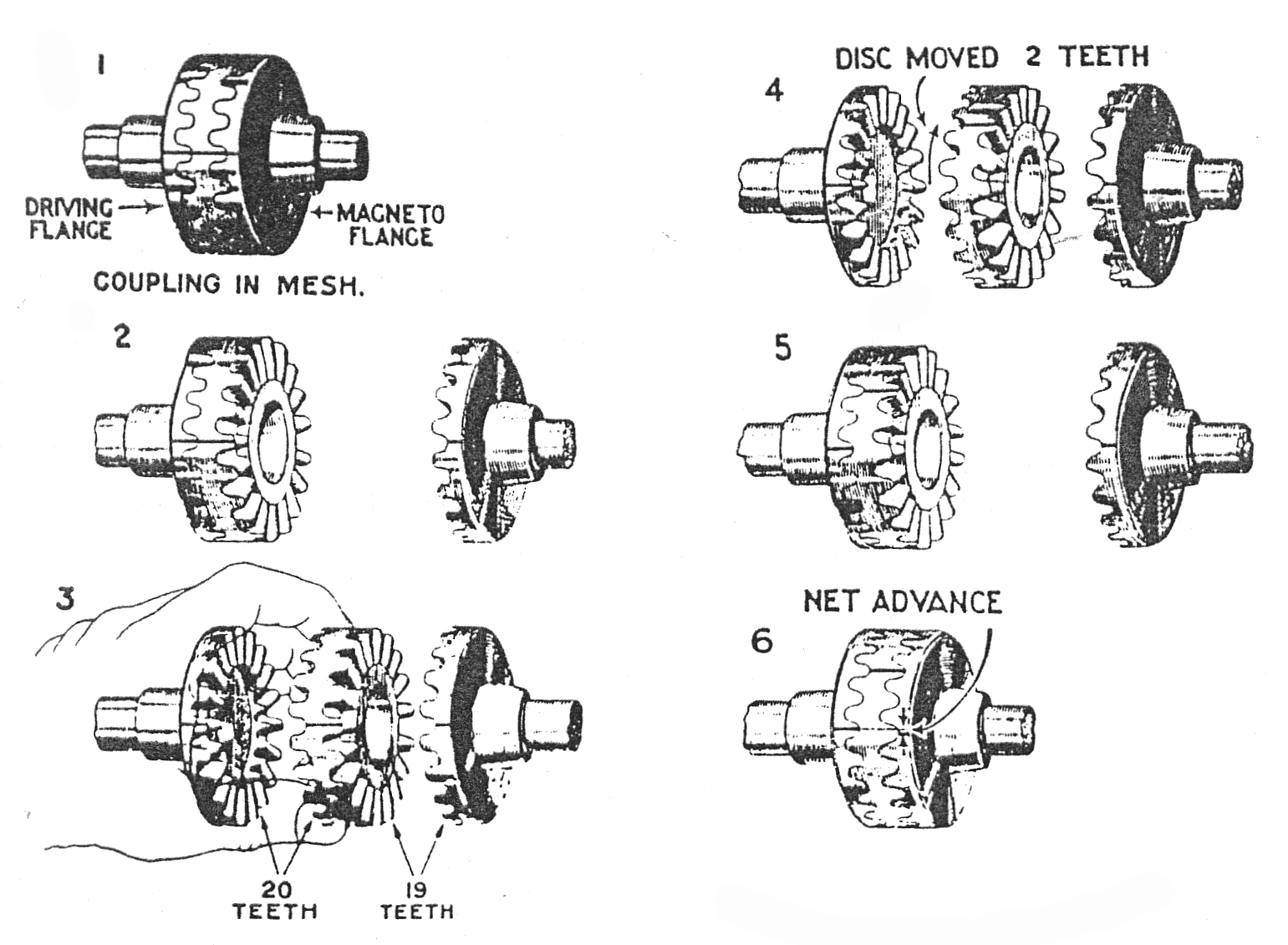
THE MAGNETO COUPLING
From the Austin Magazine
Many a car is not giving its true performance owing to the true ignition timing not being at its best position.
DESCRIPTION OF THE COUPLING.
We frequently find that the principle of the vernier coupling driving
the magneto is not thoroughly understood and we have endeavoured in this article
to explain it in such a manner that our Agents' mechanics can readily attend to
customer's cars so that they can obtain the best from them.
When the magneto has been timed by No.1 cylinder in the usual way, if on
checking the contact breaker position, or if after the engine has been running,
the ignition timing seems either too advanced or too retarded, the fine
adjustment provided by the vernier coupling can be used to set the timing as
required.
The coupling has 20 teeth on the driving flange side and
19 on the magneto side, and the minimum amount of adjustment is the difference
between the pitches of the two sets of teeth, namely 1/380th of a revolution. In
terms of one revolution, the pitch of the magneto side of the coupling is 1/19th
and that of the driving side 1/20th. Thus the difference is 1/19th less 1/20th.
(1/19 = 20/380. 1/20 = 19/380. 20/380 - 19/380 = 1/380)
To advance the ignition, the flange on the magneto spindle must be moved relative to the driving flange with the direction of the magneto rotation; and to retard the ignition, the magneto flange must be moved against the direction of the magneto rotation.
HOW TO USE THE COUPLING
Suppose the ignition requires advancing. Before starting, draw a pencil
mark across the two flanges and the rubber disc in case the original timing
position is lost. Slacken off the magneto strap, and leaving the rubber disc
engaged with the teeth of the driving flange, slide the magneto along its cradle
until the teeth of the flange on the magneto spindle are well clear of the
rubber disc, taking great care not to revolve the magneto spindle. The rubber
disc is now withdrawn from mesh with the driving flange and turned one or more
teeth against the direction of rotation of the magneto, being then put back into
mesh with the driving flange. The magneto spindle not having been revolved, it
will be found that the teeth on the magneto flange are not quite opposite their
matching teeth on the disc. Now slide the magneto back into its place so that
its flange teeth mesh with those on the disc. In so doing the magneto spindle
will be caused to revolve very slightly in relation to the driving flange in the
appropriate direction. The adjustment being so fine a movement of the disc of
two or three teeth in relation to the driving flange will usually be found the
smallest adjustment which makes any appreciable difference to the running of the
engine as regards engine timing. If further advance in the timing is considered
necessary the rubber disc should again be turned more teeth.
To retard the ignition timing the operation is as for advancing except that the rubber disc is turned with the direction of the rotation of the magneto.

Key to the illustration.
The operations necessary to advancing the ignition setting:
1. The coupling in mesh.
2. The magneto drawn back so that the
magneto flange is clear of the rubber disc.
3. The rubber disc withdrawn from mesh
with the driving flange.
4. The rubber disc turned two teeth
against the direction of rotation.
5. The rubber disc put back into mesh
with the driving flange.
6. The magneto slid back into place to
make up the coupling.
For convenience of illustration the magneto flange is shown withdrawn further than is actually necessary.